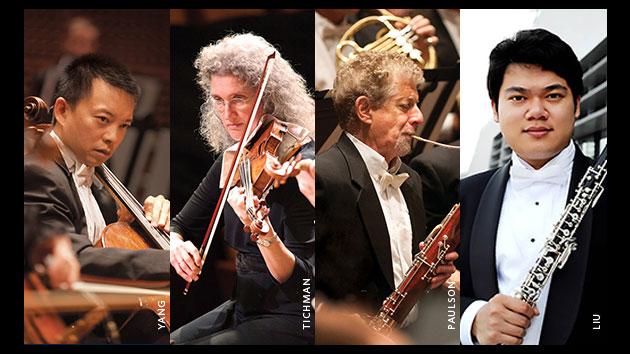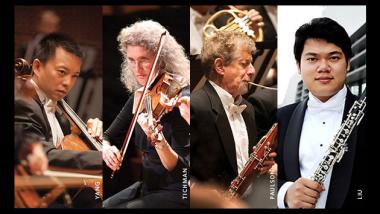
For those who consider a generous helping of Haydn to be an essential part of a musical diet, the San Francisco Symphony is serving some nice comfort food in the form of two series of concerts conducted by Dutch maestro Ton Koopman.
The internationally renowned Bach scholar and Baroque music specialist returned to Davies Symphony Hall to impart his wisdom about historically informed performance practices to the San Francisco Symphony. Last year, Koopman immersed the musicians in the music of J.S. and C.P.E Bach with remarkable results. The chemistry between Koopman and the SFS musicians is obvious, and their musical rapport gives their concerts a lustrous shine.
During last weekend’s concerts, the “Father of the Symphony,” as Haydn is sometimes called, was present by way of his Symphony No. 103, “Drumroll” and the Sinfonia Concertante for Violin, Cello, Oboe and Bassoon. (Upcoming performances include Symphony No. 98 and the famous trumpet concerto in E-flat Major.) In both cases, main dish Haydn was paired with an appetizer in the form of a suite by George Frideric Handel.
Like few others, Koopman manages to coax a modern symphony orchestra into playing much like an early music ensemble, and in the process he leaves no detail untouched. He introduces unexpected twists and accents in phrasing and dynamics, and he adds or emphasizes details that bring the music to life in a unique but very recognizable “Koopman-signature” way.
The results were on display in an extremely lively Music for the Royal Fireworks, which opened last weekend’s concerts. (Water Music is next). Bold-spirited and full of dynamic contrasts, the music kept the audience so captivated that it almost forgot to applaud after the surprisingly sudden ending of Minuet I and II, played as usual together as the closing movement of the suite but without repeat.
Hearing the “Drumroll” Symphony, after intermission, was a reminder that there is always a new way to listen to a piece of music, no matter how familiar its idiom or composition. It was a delight to have Maestro Koopman as a tour guide through Haydn’s musical constructs and get to see a well-known symphony in a new light. It was a delight to have Maestro Koopman as a tour guide through Haydn’s musical constructs and get to see a well-known symphony in a new light.
But the real treat of the evening occurred right before intermission — in the Sinfonia Concertante — when exemplary soloists Nadya Tichman (violin), Amos Yang (cello), Mingjia Liu (oboe), and Stephen Paulson (bassoon) were drawn from the ranks of the orchestra.
In this sinfonia concertante (basically a concerto with more than one soloist), Haydn gives each instrument its own virtuosic due; although the solo violin part is prominent throughout the third movement.
But the give-and-take between the solo quartet and the orchestra in the fast outer movements was equally intense — and impressive — as the chamber-music level interaction between the individual soloists. It was actually a bit like an office party: Four colleagues — fine musicians — having a good time at work, with Haydn as guest of honor and Koopman as master of ceremonies.
And the best part: We were all invited.

